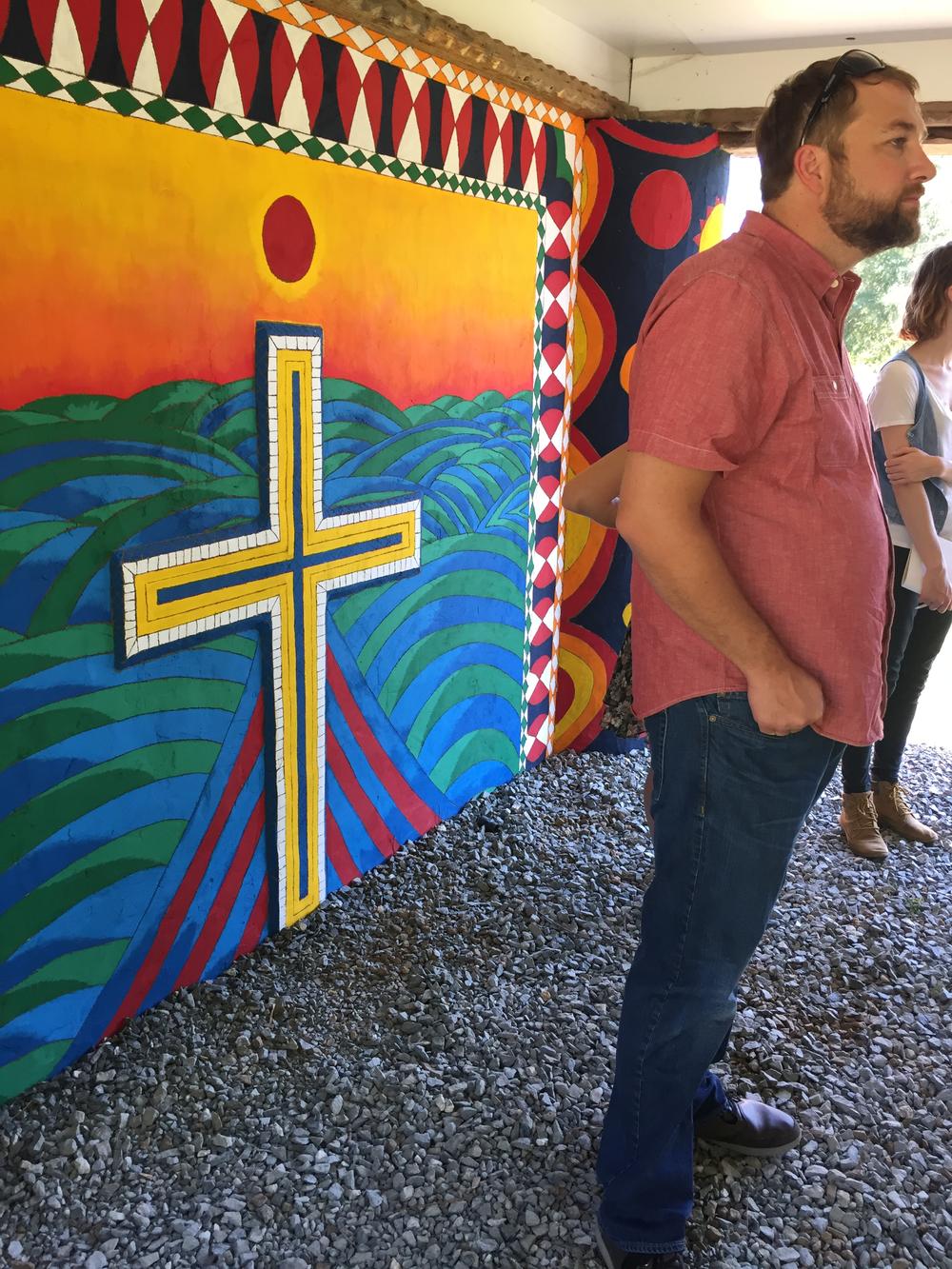Section Branding
Header Content
Pasaquan, Georgia's Phantasmagorical Dreamland, Dazzles Again
Primary Content
Southwest Georgia’s phantasmagorical homestead known as Pasaquan opens to the public Saturday after a two-year, multi-million dollar restoration.
The seven acre site is the life’s work of eccentric artist Eddie Owens Martin.
Pasaquan is hard to describe. You pull off a flat, tree-lined road down a gravel driveway and the first thing you see is a tall pagoda and long, high wall covered with brightly colored designs.
“Dope,” is the first reaction from University of Georgia art graduate student Katherine Miller.
Walk inside the wall’s archway and you’re standing before a one-story house surrounded by a dizzying maze of walkways, walls and totems swirling with mandalas, crosses, animals, faces and eyes painted in bright oranges, yellows, white, greens and blues.
“It's a bit overwhelming. The colors are vibrant and it's right there when you pull into the driveway,” said student Kaleena Stasiak.
Pasaquan’s creator, Eddie Owens Martin, grew up the child of sharecroppers on this land. He spent from the 1950s until his suicide in 1986 transforming his childhood home into a place he called Pasaquan.
"Usually when you come in I say welcome to Pasaquan you're no longer in Georgia.” Michael McFalls is the Director of Pasaquan and Chair of the Art Department at nearby Columbus State University. “You're in the land of Pasaquan which might be the future.”
Pasaquan, according to Martin, is a utopia where the past and future come together. He started building it in the 1950s on orders, he said, from spirits in dream.
“He has a fever,” said McFalls. “He gets very ill. He thinks he’s going die. And he has a vision.”
At the time, Martin was living in New York City, having run away from the religious constrictions of rural Georgia to live as a hustler, gambler, drag queen and fortune teller.
“But this being tells him this is the end of the road for him unless he straightens and follows this being’s ways.”
Like St. Paul knocked off his horse, Martin is transformed into a Pasaquoyan. The being instructs him to canonize himself St. EOM (as in his initials E-O-M), pack up and move back to Georgia to create Pasaquan.
"He created his own canon of art history that he drew upon,” said Katherine Jentleson curator of folk and self-taught art at the High Museum of Art in Atlanta.
She says Martin had no formal art training -- he built Pasaquan using imagery he saw in magazines, books and during his own travels.
“Pasaquan draws on all kinds of iconography from many different world cultures. Africa, Japan, China, American Indian.”
Martin’s art is also visionary; he was guided by internal forces spirits that he said visited him for the rest of his life.
Standing inside Pasaquan, it’s easy to feel spellbound by the swirl of colors and imagery. Director Michael McFalls says Martin wanted visitors to experience the past, present and future colliding.
“In his world, it's becoming this kind of pluralistic utopia for himself, said McFalls. “In fact that he thinks that you should reflect on these ancient cultures because we've lost our way and that in the future will come back to those cultures.”
Visitors can also reflect on the artistic and historical significance of Pasaquan thanks to extensive restoration by the Wisconsin-based Kohler Foundation, which is dedicated to preserving self-taught art environments around the country.
Kohler has donated the site to Columbus State University as an education resource for art and history students, visiting scholars and anyone else looking to be dazzled by the eccentric, visionary art of Eddie Owens Martin.




